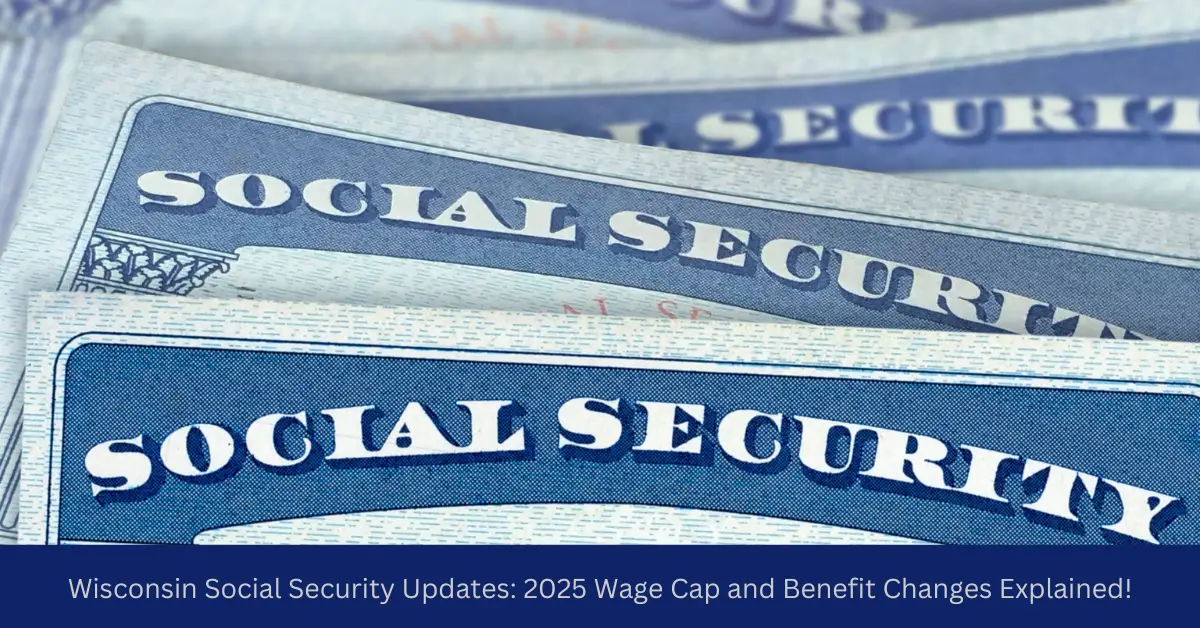Changes are coming to Social Security in 2025, impacting both beneficiaries and workers who contribute to the program through payroll taxes. While these updates primarily affect individuals at the highest and lowest ends of the income spectrum, some adjustments will apply to all Social Security recipients in Wisconsin.
With 1.2 million Wisconsinites receiving Social Security benefits, it’s essential to understand how these changes will influence payments, retirement plans, and tax contributions. Here’s a breakdown of what to expect.
Higher Social Security Wage Cap in 2025
Social Security is funded primarily through payroll taxes, with a set wage cap determining the maximum taxable earnings. In 2024, this cap was $168,600. Starting in 2025, the wage cap has increased to $176,100.
This means that individuals earning $176,100 or more will contribute a maximum of $10,918 in Social Security taxes in 2025—an increase of $465 from last year. However, earnings above this cap are not subject to Social Security taxes. For example, someone making $1 million a year will pay the same amount in Social Security taxes as someone making $176,100.
For most Wisconsin residents, this change won’t have a significant impact. According to the U.S. Census Bureau, the median household income in Wisconsin was $75,670 in 2023, meaning most workers will not see a change in their Social Security contributions.
Work Credit Requirements Are Changing
To qualify for Social Security benefits upon retirement, individuals must accumulate 40 work credits over their lifetime. People can earn a maximum of four credits per year based on their earnings.
In 2024, workers needed to earn $1,730 to gain one work credit. In 2025, that threshold increases to $1,810 per credit. This means an individual must make at least $7,240 in 2025 to earn all four credits for the year, up from $6,920 in 2024.
This change is expected to primarily impact part-time workers, stay-at-home parents, and caregivers who work limited hours.
Full Retirement Age Continues to Increase
While Social Security benefits can be claimed as early as age 62, beneficiaries who file before their full retirement age receive reduced payments. The full retirement age has been increasing gradually, and in 2025, it will be 66 years and 10 months for individuals born in 1959.
Here’s a quick look at full retirement ages based on birth year:
- 1955: 66 years and 2 months
- 1956: 66 years and 4 months
- 1957: 66 years and 6 months
- 1958: 66 years and 8 months
- 1959: 66 years and 10 months
- 1960 and later: 67 years
Waiting until full retirement age—or even delaying benefits until age 70—can significantly increase monthly payments. For example:
- Retirees filing at 62 in 2024 received a maximum benefit of $2,710 per month.
- Those who retired at full retirement age in 2024 could receive up to $3,822 per month.
- Delaying benefits until age 70 resulted in a maximum monthly benefit of $4,873.
Cost-of-Living Adjustment (COLA) for 2025
To help Social Security recipients keep up with inflation, the program includes an annual cost-of-living adjustment (COLA). In 2025, Social Security benefits will increase by 2.5%, according to the Social Security Administration (SSA).
This is a smaller increase compared to the 3.2% COLA in 2024. However, it still means more money for beneficiaries. On average, monthly Social Security payments will rise by $50—from $1,907 in January 2024 to $1,957 in 2025.
Social Security and SSI Payment Schedule for 2025
Social Security payments are distributed based on the recipient’s birth date:
- Born on the 1st–10th: Paid on the second Wednesday of each month
- Born on the 11th–20th: Paid on the third Wednesday of each month
- Born on the 21st–31st: Paid on the fourth Wednesday of each month
Supplemental Security Income (SSI) payments, which provide additional financial assistance to low-income individuals, are typically issued on the first day of each month.
Final Thoughts
For most Wisconsin Social Security recipients, these changes will bring modest increases in benefits, while higher earners will see slightly higher payroll tax contributions. As Social Security continues to evolve, staying informed about these updates can help individuals make the best financial decisions for their retirement.
Disclaimer: This article has been meticulously fact-checked by our team to ensure accuracy and uphold transparency. We strive to deliver trustworthy and dependable content to our readers.




